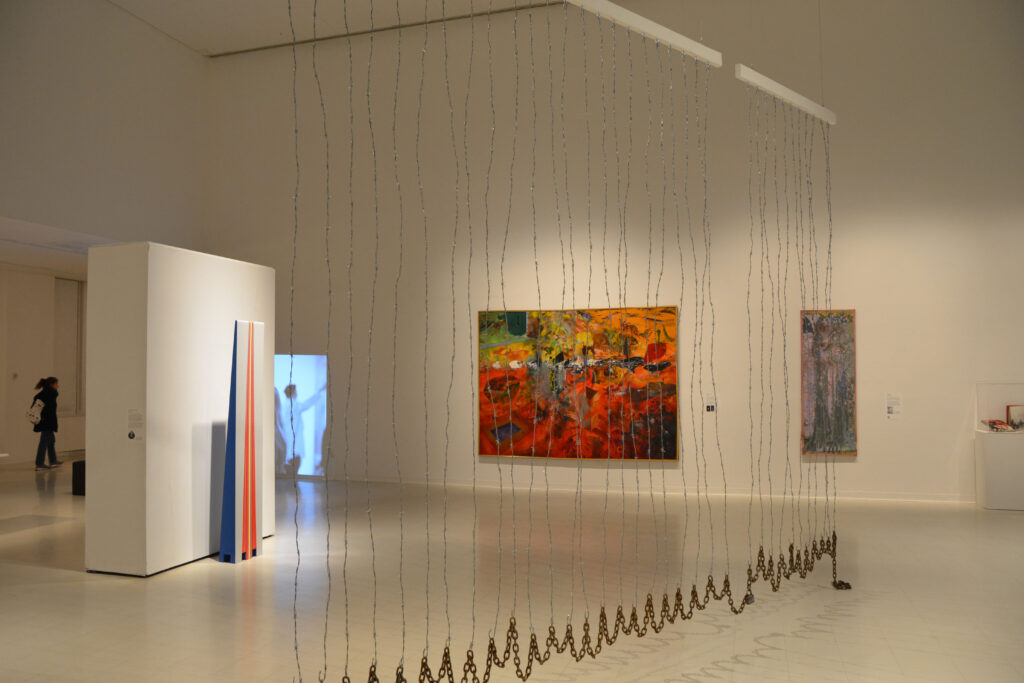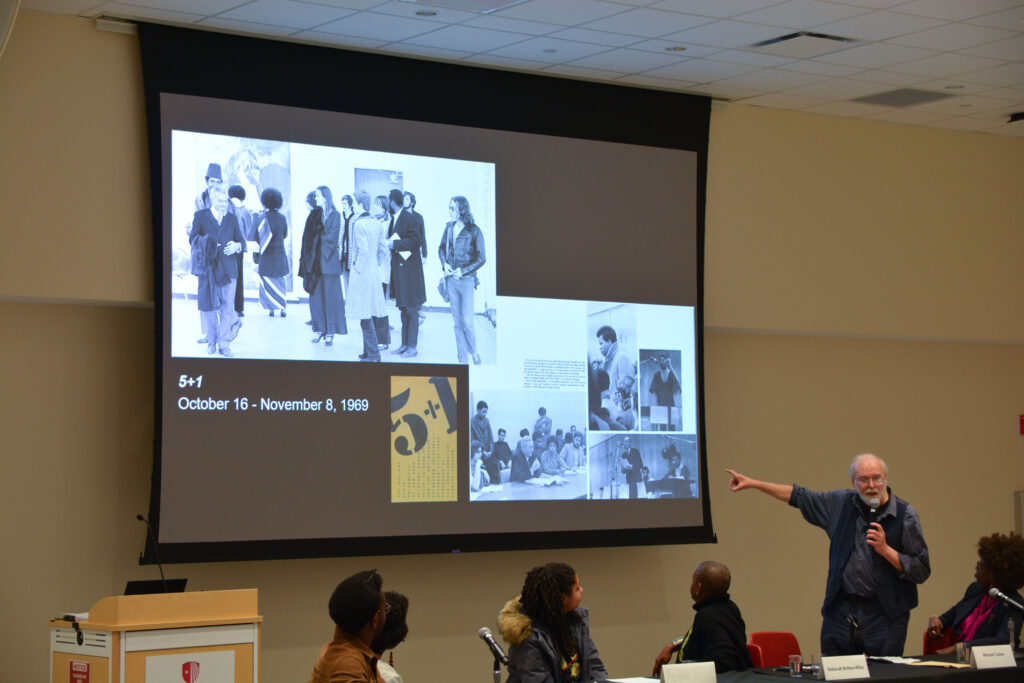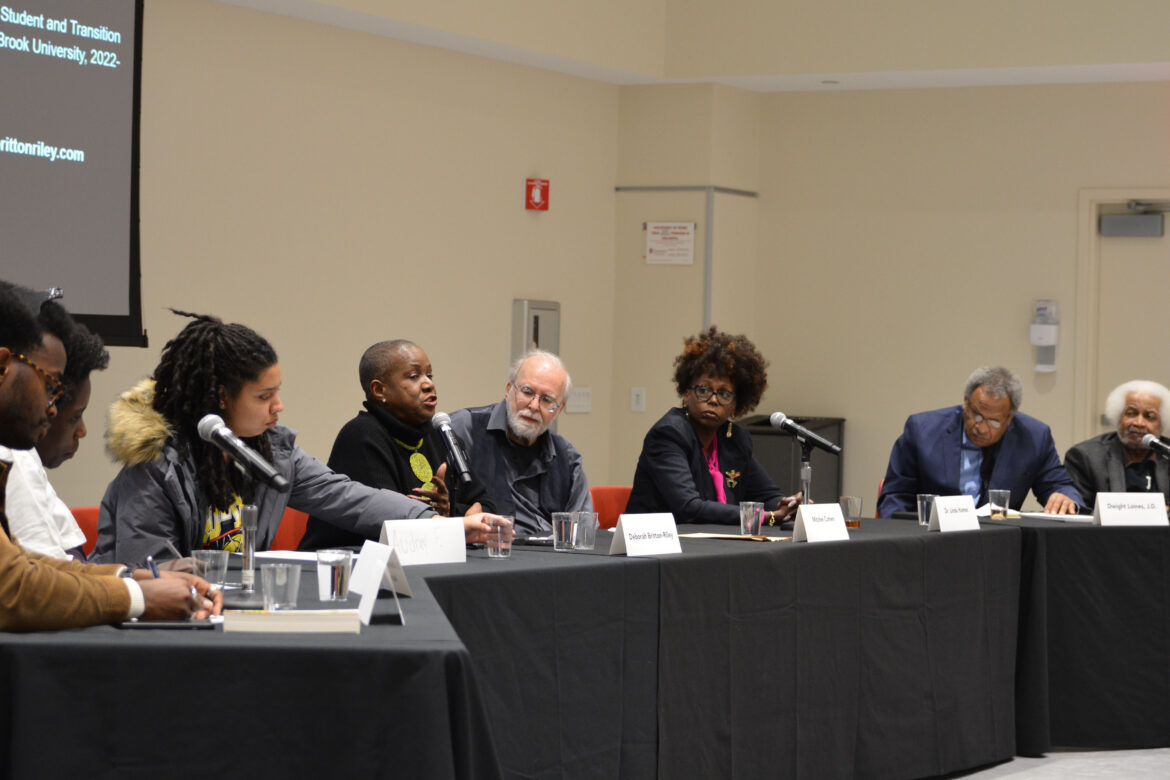Photo by Dylan Gallo.
To help in celebrating the “Revisiting 5+1” art exhibit in the Paul W. Zuccaire Gallery, Stony Brook University held a panel in the Student Union Ballroom of alumni and professors to share their experiences at the university in the late 1960s and 1970s. Holding this panel of esteemed and experienced peers helped give context to “5+1” by showing what the university was like at the time of the original art exhibit. As the panel unfolded, it became clear that Stony Brook University’s handling of the Africana Studies Department since its establishment in 1968 has been poorly managed, to say the least, demonstrating a larger issue at the university and within academia as a whole. Systemic racism’s persistence at Stony Brook — specifically through the underfunding and understaffing of the Africana Studies Department — is a blatant insult to the campus community. Underfunding and mismanagement has led to underpaying professors and decades of broken promises and shameless lies, despite the important and essential scholarship Africana studies contributes to the academic world.
The disrespect and mistreatment of these professors paints a grim picture of the racism Stony Brook aims to eliminate. These issues have gone relatively unnoticed among the broader campus community. The roots of mismanagement run deep, all the way back to Dr. Leslie Owens and his experience as chairman of the Africana Studies Department from 1978 to 2015. When initially asked to take on this role, Dr. Owens explained he felt manipulated and lied to about the extent to which the university would meet him in supporting the department and fostering its growth. He was promised a space where Africana studies scholars could meet and learn from one another, but instead, the program was originally placed within the psychology department. Now, it occupies a mere two hallways in the Social and Behavioral Sciences building.
Stony Brook’s administration demonstrated through this lack of investment that they were only willing to commit the bare minimum to the Africana Studies Department — if that. While the university itself has not been overtly supportive, efforts made by students and supported by faculty have allowed some Black members of the campus community to thrive. Steps like the return of Black World — the Black and Latino student media publication at Stony Brook since 1974 — to print and this year’s “Revisiting 5+1” exhibit in the Zuccaire Gallery are just a few examples of how these students are fighting for their culture to be seen by the university. Though the weight of representation should not be borne by students, Black and Latino campus community members continually demonstrate that they will not slip into silence.

Both the original “5+1,” exhibition from 1969 and its subsequent revival this past winter demonstrate innovation and individuality in Black abstract art. Perhaps even more importantly, these exhibits represent Black artists, scholars, students and staff members coming together to be heard in an establishment that did not want to listen to them.
Similarly, Black World’s return to print allows Black and Latino voices to be both seen and heard — not only in a single article, but in a publication wholly dedicated to sharing stories affecting Black and Latino communities.
The panel held on Tuesday, Feb. 7 in the Union Ballroom was assembled to help students understand what the campus was like in the late ‘60s and ‘70s, providing historical context to the original “5+1” exhibit.
Among the panelists were a number of Stony Brook alumni who fought for change both on campus and nationally in the 1960s and beyond. Directly following the civil rights movement in the ’60s, Deborah Britton-Riley came to Stony Brook after dropping out of high school. Britton-Riley described the university as a refuge from growing crime in Harlem at the time. During her time as a student, she co-founded the Black Womyn’s Association. The comradery she found at Black and Latino student organizations on campus helped her fully experience what Stony Brook had to offer before graduating in 1981.

Mitchel Cohen, Class of 1974, represents the flip side of this coin. A political activist and professional troublemaker, Cohen took part in numerous rallies and protests. Reminding the panel why activism is not only important but necessary, Cohen cited his own experiences of violence while protesting on campus. Cohen’s recounting of law enforcement and Stony Brook security’s unjust treatment of protesters and activists — most notably that of Paul Watson, a Stony Brook student at the time who also founded one of the Black Panther chapters in the area. Watson was taken by campus security and beaten for two days in the basement of Suffolk County Police’s Sixth Precinct building in Selden — casting a grim shadow over the treatment of activists on this campus. Stony Brook University flaunts its capacity to enable social mobility for its students. While this did happen for Deborah Britton-Riley, this is sadly not the norm.
Following Britton-Riley and Cohen, Dr. Linda Humes discussed her time as a student at Stony Brook from 1974 to 1977. She co-founded the Black Theater Club on campus — the first of its kind — and served as vice president of the Black Student Union. Dr. Humes’ time with the Black Theater Club brought a plethora of respected poets and actors to see on-campus performances by young and bright Black students. The club and others like it brought along a huge sense of community for not only Dr. Humes, but the whole Africana Studies Department. Similar to “5+1,” the Black Theater Club gave Black students a space to speak out and find themselves alongside their peers.
The alumni panel showcased multiple instances of Stony Brook’s evolving treatment of Black students and professors. Though each panelist shared some fond memories of support from the university, they also refused to shy away from talking about the university’s mistreatment of activists and its broken promises to the Africana Studies Department. Despite its setbacks, the department is still active and flourishing to this day.
If Stony Brook truly wants to “go far beyond,” as its slogan states, the administration needs to not only recognize the mistakes of the past, but actively try to be better in the present and the future. Each piece from “Revisiting 5+1” is a monument to the struggle of the Black artists who made it — and a celebration of those artists’ Blackness. The six scholars who curated the original “5+1” exhibit in the ‘60s sparked a much-needed cultural revolution on campus at a time when Black voices were fighting to be heard. Its revitalization serves as a reminder that those same voices are present decades later — and still making themselves heard.
It is imperative that there are more opportunities for Black voices to be heard all the time. The recent revival of Black World in print demonstrates a clear platform for disenfranchised students, but only time will tell if the Stony Brook administration will send back the same effort that Black students have been giving for decades.




Comments are closed.